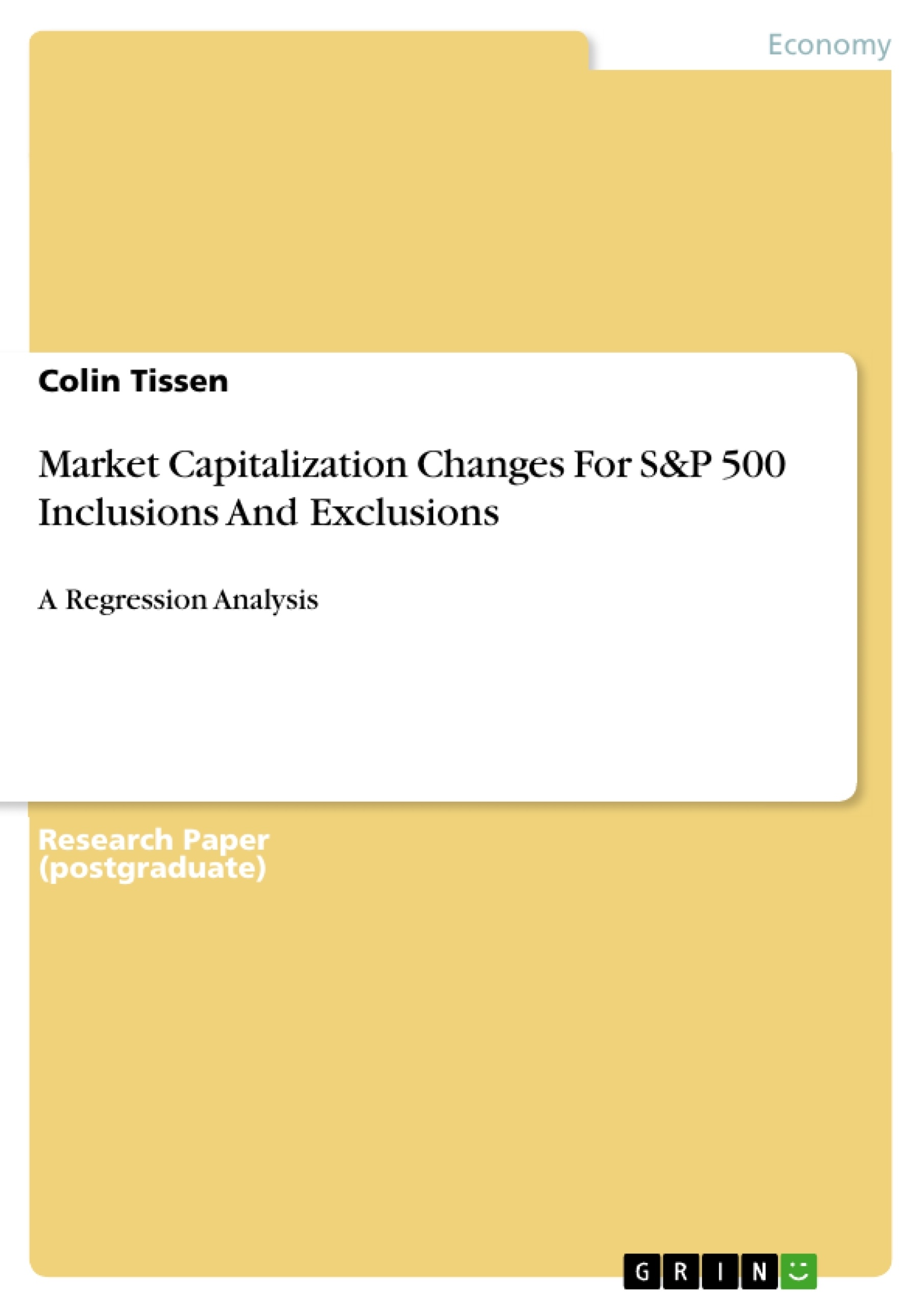Previous research has already proven that firms which get included in or excluded from the S&P 500 index experience stock price changes that ultimately result in market capitalization changes. The causes of these changes has extensively been examined, but a consensus on the true cause has not yet been reached. In this paper the market capitalization effect is examined by making a distinction between the reasons for inclusions and exclusions. It is argued that expected events, like bankruptcy and index-downgrading, have lower price effects than unexpected events, which include mergers and acquisitions. By usage of a regression analysis it is concluded that there is no difference in price effects between the individual reasons for inclusions and exclusions. However, when the reasons are grouped into unexpected and expected events there is a significant effect for the inclusions. Firms which expectedly enter the index experience lower market capitalizations changes than firms which unexpectedly entered the index. This effect could not be proved for exclusions.
Inhaltsverzeichnis (Table of Contents)
- Introduction
- Theoretical background
- Hypotheses
- Dataset
- Regression analysis
- Inclusions
- Exclusions
- Limitations
- Recommendations for further research
- Conclusion
- Sources
Zielsetzung und Themenschwerpunkte (Objectives and Key Themes)
This paper investigates the market capitalization changes experienced by firms included in or excluded from the S&P 500 index, with a particular focus on analyzing the impact of different reasons for inclusion and exclusion. The study aims to determine whether expected events, like bankruptcy and index-downgrading, have different price effects than unexpected events, such as mergers and acquisitions.
- Market capitalization changes of S&P 500 index inclusions and exclusions
- The impact of different reasons for inclusion and exclusion
- Comparison of price effects between expected and unexpected events
- Regression analysis to test hypotheses
- Limitations of the research and recommendations for future studies
Zusammenfassung der Kapitel (Chapter Summaries)
- Introduction: The introduction presents the phenomenon of market capitalization changes associated with S&P 500 index inclusions and exclusions. It highlights the lack of consensus on the true cause of these price changes and introduces the focus of the paper: examining the differences in price effects related to the reasons for inclusion and exclusion.
- Theoretical Background: This section discusses existing theories on the causes of market capitalization changes, including the information hypothesis, the price pressure hypothesis, and the downward sloping demand curve hypothesis. It then introduces Chen et al.'s (2006) argument regarding changes in investor awareness and Zhou's (2011) distinction between pure and upward additions.
- Hypotheses: This chapter lays out the hypotheses of the research, focusing on the distinction between expected and unexpected events as reasons for S&P 500 inclusions and exclusions.
- Dataset: This chapter discusses the data used in the research and analyzes the frequency distribution of different reasons for S&P 500 changes.
- Regression Analysis: This chapter details the regression analysis conducted to test the hypotheses, including separate sections dedicated to analyzing the effects of inclusions and exclusions.
Schlüsselwörter (Keywords)
Market capitalization, S&P 500 index, inclusions and exclusions, price effects, expected and unexpected events, regression analysis, investor awareness, information asymmetry, price pressure.
- Quote paper
- Colin Tissen (Author), 2015, Market Capitalization Changes For S&P 500 Inclusions And Exclusions, Munich, GRIN Verlag, https://www.grin.com/document/300681



